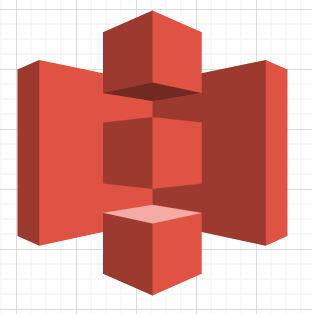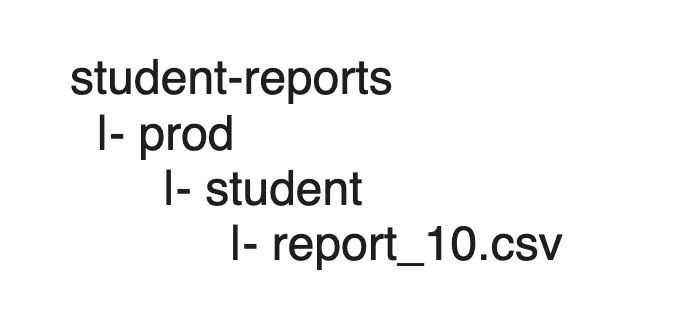Spring boot: Scale file storage with Amazon S3
 MUKUL JHA
MUKUL JHA
You should learn this first
If you already have a bucket, secret, access key, and bucket region then you can skip these steps
Let's create a sample s3 bucket.

A bucket is a container for objects stored in Amazon S3. You can store any number of objects in a bucket and can have up to 100 buckets in your account.
https://docs.aws.amazon.com/AmazonS3/latest/userguide/UsingBucket.html
Here is a guide link on how to create a bucket in Amazon S3.
https://docs.aws.amazon.com/AmazonS3/latest/userguide/creating-bucket.html
How to create a secret and access key?
https://docs.aws.amazon.com/powershell/latest/userguide/creds-idc.html
Now we have bucket, secret, access key, and bucket region.
Let's create a spring boot application and add this dependency.
Gradle:
implementation 'com.amazonaws:aws-java-sdk-s3:1.12.402'
Maven:
<dependency>
<groupId>com.amazonaws</groupId>
<artifactId>aws-java-sdk-s3</artifactId>
<version>1.12.402</version>
</dependency>
https://mvnrepository.com/artifact/com.amazonaws/aws-java-sdk-s3
2. Create the Configuration class.
You have access_key, secret_key and your-bucket-region. let's create a connection between your application and the Amazon S3.
@Configuration
public class AwsS3Client {
@Bean
public AmazonS3 getS3Client() {
BasicAWSCredentials awsCreds = new BasicAWSCredentials("access_key"
, "secret_key");
return AmazonS3ClientBuilder.standard()
.withCredentials(new AWSStaticCredentialsProvider(awsCreds))
.withRegion(Regions.fromName("your-bucket-region"))
.build();
}
Create a utility class.
consider
Bucket Name: student-reports
String cloud path = "/prod/student";
- Upload file
/**
cloudFilePath is Dir where file to be uploaded.
**/
private final AmazonS3 amazonS3client;
public void uploadToS3(String bucketName, String cloudPath, File file) {
PutObjectRequest putObjectRequest = new PutObjectRequest(bucketName, cloudPath, file);
amazonS3client.putObject(putObjectRequest);
}
// caller function
uploadToS3("student-reports", "/prod/student/report_10.csv", new File("/usr/Download/report_10.csv"));
The bucket is nothing but a directory and a cloud path is a folder structure inside the bucket or directory.

Folder structure created inside the bucket.
- Check if the file exists.
private final AmazonS3 amazonS3client;
public boolean doesObjectExistInS3(String bucketName, String key) {
return amazonS3client.doesObjectExist(bucketName, key);
}
doesObjectExistInS3("student-reports", "/prod/student/report_10.csv");
3. Delete file.
private final AmazonS3 amazonS3client;
public void deleteObject(String bucketName, String key) {
amazonS3client.deleteObject(bucketName, key);
}
// caller function
deleteObject("student-reports", "/prod/student/report_10.csv");
- Deleting Multiple Objects
public void deleteFilesFromS3(String bucketName, List<KeyVersion> keys) {
try {
// Delete the objects.
DeleteObjectsRequest multiObjectDeleteRequest = new DeleteObjectsRequest(bucketName)
.withKeys(keys)
.withQuiet(false);
// Verify that the objects were deleted successfully.
DeleteObjectsResult delObjRes = amazonS3client.deleteObjects(multiObjectDeleteRequest);
int successfulDeletes = delObjRes.getDeletedObjects().size();
} catch (AmazonServiceException e) {
// The call was transmitted successfully, but Amazon S3 couldn't process
// it, so it returned an error response.
e.printStackTrace();
} catch (SdkClientException e) {
// Amazon S3 couldn't be contacted for a response, or the client
// couldn't parse the response from Amazon S3.
e.printStackTrace();
}
}
// caller function
deleteFilesFromS3("student-reports". List.of(new KeyVersion("/prod/student/report_10.csv")));
or
String objkeyArr[] = {
"/prod/student/report_10.csv",
"/prod/student/report_11.csv",
"/prod/student/report_1.csv",
};
DeleteObjectsRequest multiObjectDeleteRequest = new DeleteObjectsRequest("student-reports")
.withKeys(objkeyArr);
amazonS3client.deleteObjects(delObjReq);
5. Rename the object
You can't rename the s3 object.
Steps:
- Copy the file/object with a new name.
Delete old files/objects.
Eg: Renaming the object name from “/prod/student/report_10.csv” to “/prod/student/report_40.csv”
private final AmazonS3 amazonS3client;
public void renameObject(String sourceBucketName, String sourceKeyName, String destinationBucketName,
String destinationKeyName){
CopyObjectRequest copyObjRequest = new CopyObjectRequest(sourceBucketName,
sourceKeyName, destinationBucketName, destinationKeyName);
amazonS3client.copyObject(copyObjRequest);
amazonS3client.deleteObject(new DeleteObjectRequest(sourceBucketName, sourceKeyName));
}
// caller function
renameObject("student-reports", "/prod/student/report_10.csv", "student-reports",
"/prod/student/report_40.csv");
6. Copying, Moving the object
CopyObjectRequest copyObjRequest = new CopyObjectRequest(bucketName,
keyName, bucketName, destinationKeyName);
amazonS3client.copyObject(copyObjRequest);
7. Download the object
S3Object s3object = amazonS3client.getObject("student-reports", "/prod/student/report_10.csv");
S3ObjectInputStream objectInputStream = amazonS3client.getObjectContent();
FileUtils.copyInputStreamToFile(objectInputStream, new File("/usr/Download/report_10.csv"));
Here is the complete Utility class.
Now you can leverage AWSFileUploadService in your application.
Hope you enjoyed reading!
Your support means a lot. Feel free to like and share if you find it valuable. Thanks for your time! 🙏
Subscribe to my newsletter
Read articles from MUKUL JHA directly inside your inbox. Subscribe to the newsletter, and don't miss out.
Written by
